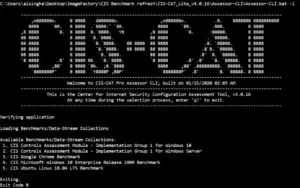China’s Plan to Counter Starlink Revealed

- Chinese researchers are exploring various countermeasures, including lasers and sabotage, against Elon Musk’s Starlink, viewing the satellite constellation as a national security threat.
Chinese government and military scientists are reportedly developing a range of strategies to counter Elon Musk’s Starlink satellite network. An Associated Press review of dozens of published papers from Chinese journals has revealed a deep concern over Starlink’s potential military applications and close ties to the U.S. defense establishment. Beijing views the vast constellation of low-orbit satellites as a significant threat to its national security and strategic interests. The papers explore methods to hunt and destroy Starlink satellites, highlighting the nation’s growing apprehension about the network’s global dominance.
Concerns about Starlink are not limited to China; traditional U.S. allies have also questioned the wisdom of relying on a company run by an unpredictable figure for critical communications infrastructure. These fears intensified after the 2022 invasion of Ukraine, where Starlink proved its strategic value on the battlefield. At the same time, Musk’s increasing involvement in politics, including his support for certain political figures, has only added to the global apprehension. His company, SpaceX, remains deeply integrated with U.S. government functions, having secured billions in contracts for military and NASA missions.
A Global Scramble for Alternatives
Starlink has established a near-monopoly in space-based communications, sparking a global effort to develop viable alternatives. According to Jonathan McDowell, an astronomer at the Harvard-Smithsonian Center for Astrophysics, Starlink’s fleet of over 8,000 active satellites accounts for approximately two-thirds of all active satellites in orbit. This dominance has complicated the intersection of business, politics, and national security, making it difficult for competitors to catch up. For instance, Jeff Bezos’s Project Kuiper has only launched 78 satellites so far, a small fraction of Starlink’s massive fleet.
European nations are also struggling to catch up, with the EU’s IRIS2 initiative lagging far behind. Officials have been forced to lobby their member states against signing contracts with Starlink while their own system gets off the ground. The IRIS2 lead legislator, Christophe Grudler, stated that while the EU is an ally of the U.S., it needs to maintain its “strategic autonomy” to avoid having its destiny controlled by others. This sense of urgency is shared by China, which has publicly announced its ambition to create its own version of Starlink, known as Guowang, with military capabilities.
Assessing Vulnerabilities and Countermeasures
The perceived military threat from Starlink has prompted Chinese researchers to thoroughly assess the network’s capabilities and vulnerabilities. They have published numerous papers that meticulously analyze the system and explore potential countermeasures. In one paper, researchers from China’s National Defense University simulated Starlink’s coverage and concluded that it can provide round-the-clock connectivity over key Chinese locations, including Beijing. This study underscores their concern about the network’s pervasive reach.
Other researchers have proposed various active countermeasures, including the use of stealth submarines with space-shooting lasers to burn equipment and custom-built attack satellites with ion thrusters to interfere with solar panels. Researchers have also suggested using deepfakes to create fictitious targets and exploiting supply chain vulnerabilities to sabotage the network. Despite some U.S. analysts suggesting that Beijing’s fears may be exaggerated, the debate continues, with one Chinese paper simply titled: “Watch out for that Starlink.” The potential deployment of these countermeasures raises the risk of collateral damage to other customers as Starlink expands its global footprint.
Interesting fact
|








